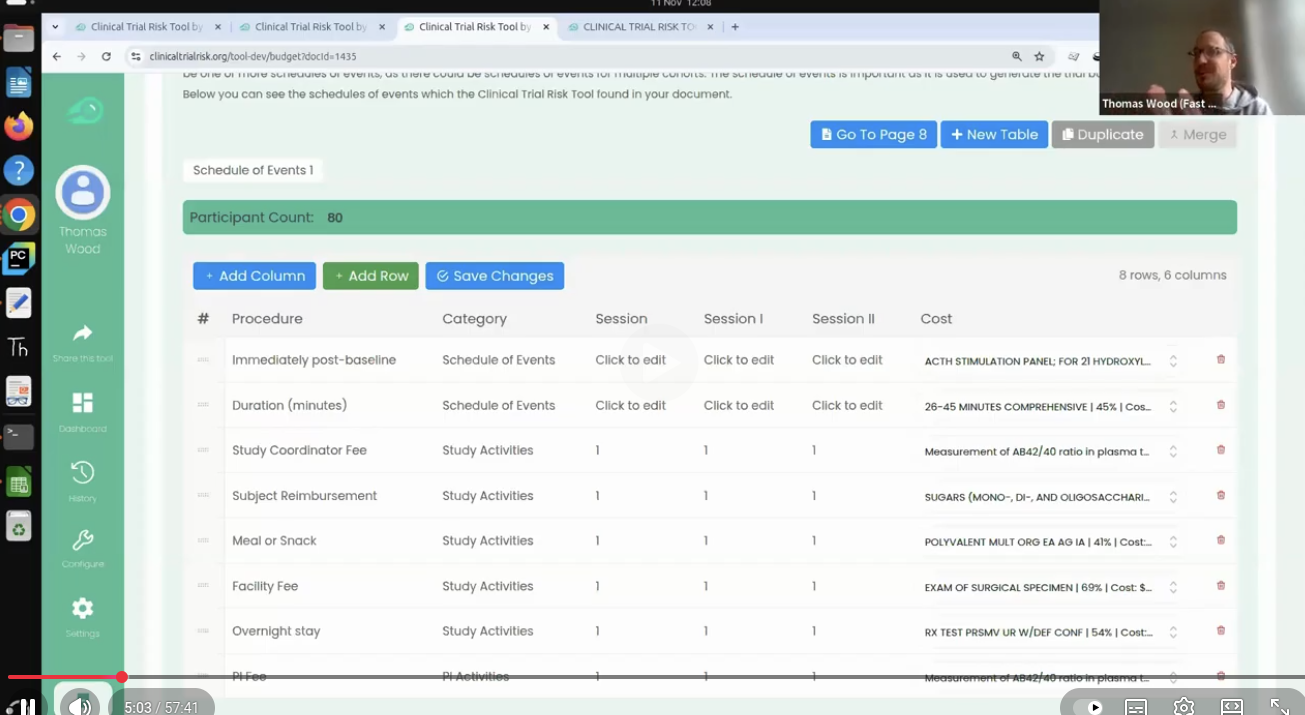
I am pleased to announce the Clinical Trial Risk Tool, which is now open to the public to use.
The tool is available at https://clinicaltrialrisk.org/tool.

Screenshot of the tool
The tool consists of a web interface where a user can upload a protocol in PDF or Word format, and ultimately a number of features were extracted, such as number of subjects, statistical analysis plan, effect size, number of countries, etc.
The tool which can estimate the risk of HIV and TB trials ending uninformatively and will soon be extended to cover other metrics such as trial complexity and cost.
The NLP model was developed as an ensemble of components which extracted different aspects of information from the text, including rule-based (hand-coded) and neural network designs.
The model’s output features were then condensed down via a clinical trials risk model which ultimately produces a three-level risk traffic light score. The full analysis can be exported as XLSX or PDF.

Thomas Wood presents the Clinical Trial Risk Tool at the Clinical AI Interest Group at Alan Turing Institute The Clinical AI Interest group is a community of health professionals from a broad range of backgrounds with an interest in Clinical AI, organised by the Alan Turing Institute. In the group’s November 2025 meeting, the talk was given by Dr Jeff Hogg, Programme Director, MSc AI Implementation (Healthcare), University of Birmingham and Clinical Innovation Officer in AI, University Hospitals Birmingham NHSFT, titled AI Readiness for Health and Care Provider Organisations.

Guest post by Safeer Khan, Lecturer at Department of Pharmaceutical Sciences, Government College University, Lahore, Pakistan Multi-Arm & Multi-Stage (MAMS) Clinical Trials Design Tips The design of clinical trials is increasingly challenged by the Rising Costs, limited availability of eligible patient populations, and the growing demand for timely therapeutic evaluation. Traditional parallel-group designs, which typically compare a single intervention to a control, are often insufficient to meet these pressures in terms of speed, efficiency, and resource utilization.

You can use the t-test when you want to compare the means (averages) of continuous data between two groups, such as blood pressure or maximum concentration of a drug in urine (Cmax). If you have data with a dichotomous outcome, you can use the Chi-Squared test instead - please try our Chi-Squared sample size calculator. The calculator below will calculate the minimum sample size for you. Your expected effect size d is the standardised effect size according to Cohen’s definition.